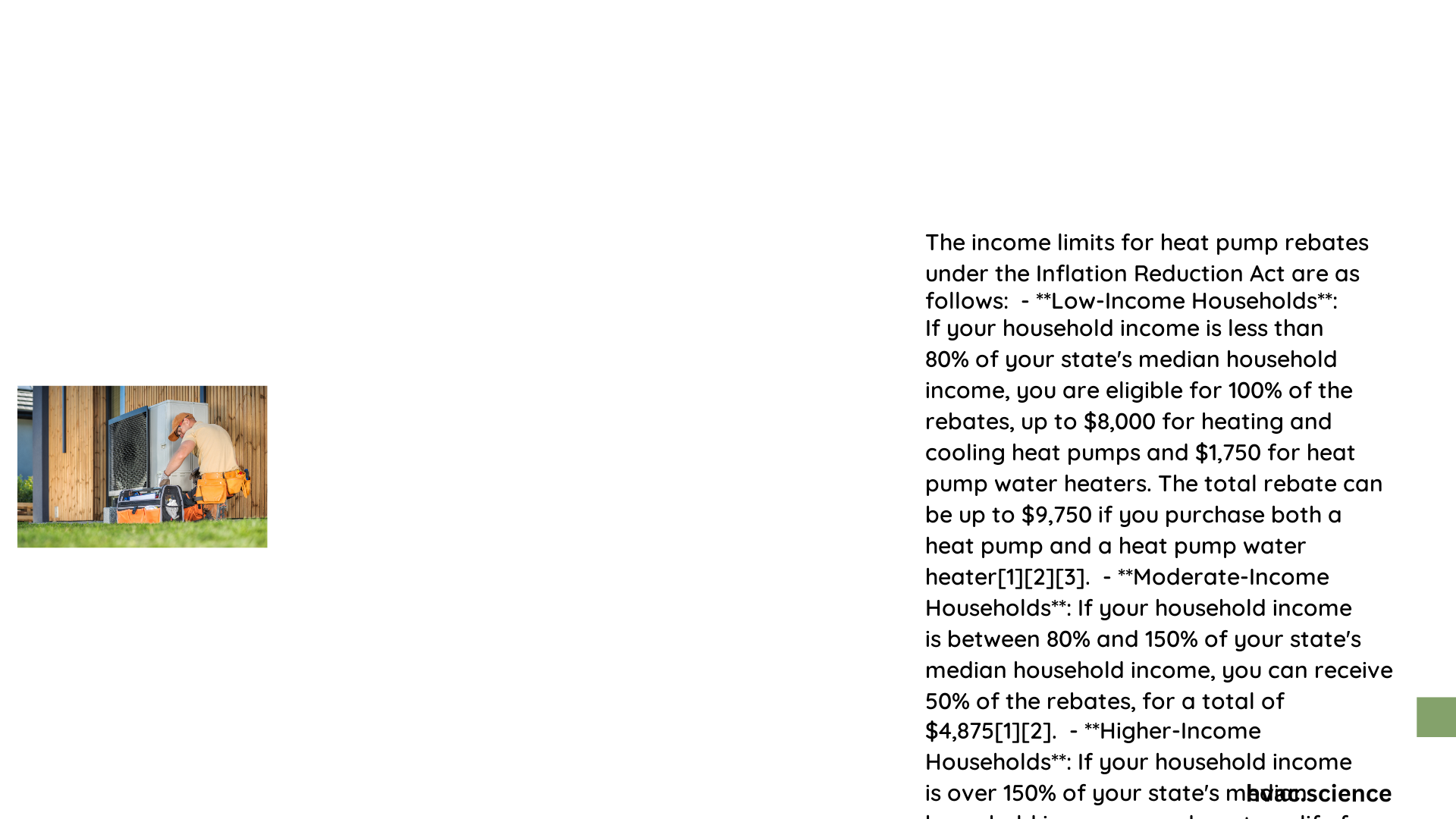Heat pump rebates offer significant financial incentives for homeowners looking to upgrade their home’s energy systems, with income-based eligibility determining the amount of potential savings. Households can receive up to $9,750 in rebates depending on their income level, with full rebates available for low-income households earning at or below 80% of the area median income, and partial rebates for moderate-income households earning between 80% and 150% of the median income.
What Are Heat Pump Rebate Income Limits?
Heat pump rebate income limits are structured to provide financial assistance for energy-efficient home improvements based on household income levels. The federal government and state agencies have established clear guidelines to help homeowners understand their potential rebate eligibility.
How Do Income Levels Determine Rebate Amounts?
| Income Level | Rebate Percentage | Maximum Rebate Amount |
|---|---|---|
| ≤ 80% AMI | 100% | $9,750 |
| 80-150% AMI | 50% | $4,875 |
| > 150% AMI | 0% | $0 |
Who Qualifies for Heat Pump Rebates?

Homeowners can qualify for heat pump rebates based on several key factors:
- Income Verification
- Provide documented proof of household income
- Meet area median income (AMI) thresholds
-
Submit tax returns or pay stubs
-
Equipment Requirements
- Heat pumps must meet Consortium for Energy Efficiency (CEE) standards
- Achieve minimum energy savings thresholds
- Install qualified heating and cooling systems
What Documentation Is Needed?
To successfully claim heat pump rebates, homeowners must prepare:
- Federal tax returns for the previous two years
- Recent pay stubs
- W-2 forms
- Proof of residence
- Detailed heat pump system specifications
How to Calculate Your Potential Rebate?
Calculating your potential heat pump rebate involves several steps:
- Determine your household’s area median income
- Check your state-specific rebate guidelines
- Verify heat pump system efficiency ratings
- Calculate potential energy savings
- Submit comprehensive documentation
Key Considerations for Rebate Eligibility
- Energy Efficiency: Systems must provide at least 20% energy savings
- Installation Quality: Professional installation required
- Timing: Rebates may have specific application windows
- State Variations: Exact requirements differ by location
Maximizing Your Heat Pump Rebate Potential
Homeowners can optimize their rebate opportunities by:
- Researching state-specific programs
- Consulting energy efficiency experts
- Comparing multiple heat pump systems
- Understanding long-term energy savings potential
Common Challenges in Rebate Application
- Complex documentation requirements
- Varying state-level guidelines
- Technical efficiency standards
- Income verification processes
Recommended Next Steps
- Contact local energy efficiency office
- Gather comprehensive income documentation
- Research qualified heat pump systems
- Schedule professional energy assessment
- Submit detailed rebate application
Financial Impact and Long-Term Savings
While initial rebates provide immediate financial relief, heat pump installations offer substantial long-term benefits:
- Reduced energy consumption
- Lower utility bills
- Increased home value
- Environmentally friendly technology
Potential Savings Breakdown
- Immediate Rebate: Up to $9,750
- Annual Energy Savings: $300-$1,000
- System Lifespan: 10-15 years
- Total Potential Savings: $3,000-$15,000
Conclusion
Heat pump rebate income limits provide a structured approach to supporting energy-efficient home improvements across different income levels. By understanding these guidelines, homeowners can make informed decisions about upgrading their home’s heating and cooling systems.
